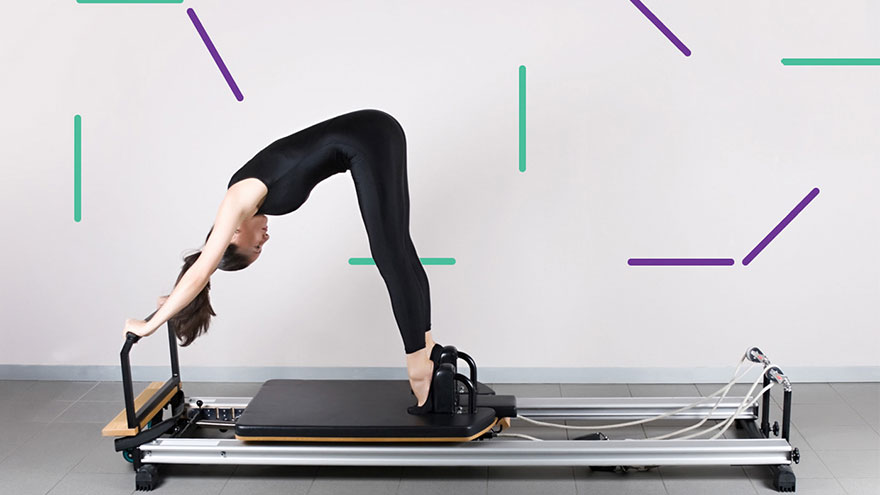Does Pilates Start With Isometric Movement?
Pilates does not start with isometric movement but rather with isometric contraction. The word “movement” is a misnomer, since there is no movement in isometrics. An isometric exercise is a static muscular contraction or a contraction against a resistant force. In Pilates, engaging your core by pulling your navel to your spine or gripping your gluts initiates isometric contractions. All Pilates exercises begin and end with isometric contractions.

The Hundred
The Hundred is a basic warm-up and core-stabilizing exercise. Isometric contractions occur to build heat, strengthen the deep abdominals and stabilize the shoulder girdle. Lying on your back with your pelvis and ribcage in a neutral position and your hips and knees flexed to 90 degrees, extend your arms at your sides with your palms facing down. Drawing your navel to your spine and lightly gripping your gluts is an isometric contraction. Rolling your head, neck and shoulders off the floor, initiate tiny, controlled downward taps with your palms ensuring that the movement originates from your shoulders, not your arms or wrists.
Seated Forward Fold
In a basic seated posture with your legs extended long, the set-up for Seated Forward Fold involves pulling your navel to your spine and engaging your quadriceps while flexing your feet. These isometric contractions serve to stabilize your body before any movement commences. As your spine rolls forward in a curved position, this isometric stabilization of the non-moving muscles allows your body to get deeper into the pose and helps protect against injury. It also provides a stable, efficient framework for your body’s individual limitations such as a limited range of motion in the lower back due to a previous injury.
Pelvic Lift
The Pelvic Lift focuses on core stability and lower-body strengthening. Begin in a supine position with your knees bent and your feet flat on the floor. Extend your arms down by your sides with your palms facing down. Slowly peel your lower back off the floor to lift it and your ribcage. Your weight should be evenly distributed across your shoulders keeping tension out of your head and neck. Tucking your tailbone, your gluts should be lightly gripped but not overly so to avoid putting stress on your lower back and hips. This exercise illustrates that using your muscles correctly without locking the joints can be challenging.
Don’t Tense Up
Isometric contraction in Pilates does not equal tensing your body. According to a study in “Osteoporosis International,” the weight-bearing load initiated by an isometric contraction is greatest over the bony areas that the muscle spans. Therefore, the joints are particularly vulnerable to imposed force. Muscle contraction balanced with a fluid and yielding body frame is one of the hallmarks of the Pilates workout. The benefits of load bearing the muscle fibers through properly executed isometric contractions may result in an overall stronger and more functionally fit body.
You Might Also Like :: What Is Your Target Heart Rate During Exercise?

